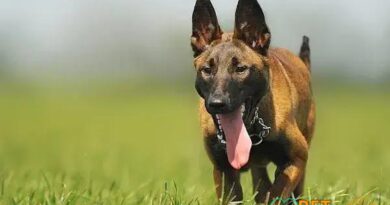What is Uniqueness in Dogs
What is Uniqueness in Dogs?
Uniqueness in dogs refers to the distinct characteristics that set each breed apart, as well as the individual traits that make each dog special. This uniqueness can manifest in various forms, including physical appearance, temperament, and behavior. Understanding what makes dogs unique not only enhances our appreciation for them but also helps us cater to their specific needs and preferences.
Physical Traits of Unique Dog Breeds
One of the most noticeable aspects of a dog’s uniqueness is its physical traits. Different breeds exhibit a wide range of sizes, coat types, colors, and shapes. For example, the Dachshund’s elongated body contrasts sharply with the stout build of a Bulldog. These physical differences are not merely aesthetic; they often serve functional purposes, such as hunting, herding, or guarding. Recognizing these traits can help potential dog owners choose a breed that fits their lifestyle and environment.
Temperament and Personality Variations
Beyond physical attributes, the temperament of dogs varies significantly across breeds and individuals. Some breeds, like the Labrador Retriever, are known for their friendly and outgoing nature, while others, such as the Shiba Inu, may exhibit a more independent and aloof demeanor. Understanding these personality traits is crucial for dog owners, as it influences training methods, socialization, and overall compatibility with family dynamics.
Behavioral Traits and Their Implications
Behavioral uniqueness in dogs can also be quite pronounced. Certain breeds have innate behaviors that stem from their historical roles. For instance, herding breeds like the Border Collie exhibit strong instincts to herd, which can lead to behaviors such as chasing or nipping. Recognizing these behavioral traits allows owners to provide appropriate outlets for their dogs’ instincts, ensuring a harmonious living environment.
Genetic Diversity and Health Considerations
The uniqueness of dogs is also reflected in their genetic diversity. Mixed-breed dogs often inherit a combination of traits from their parent breeds, leading to a wide array of physical and behavioral characteristics. However, this diversity can also bring about health considerations, as certain breeds are predisposed to specific genetic conditions. Understanding these health implications is vital for responsible dog ownership and breeding practices.
The Role of Environment in Shaping Uniqueness
While genetics play a significant role in a dog’s uniqueness, the environment also has a profound impact. Factors such as training, socialization, and daily experiences contribute to a dog’s personality and behavior. For instance, a dog raised in a stimulating environment with plenty of social interaction may develop different traits compared to one that is isolated. This highlights the importance of providing a nurturing environment to enhance a dog’s unique qualities.
Cultural Perceptions of Dog Uniqueness
Cultural perceptions also influence how we view the uniqueness of dogs. In some cultures, certain breeds are revered for their historical significance or working abilities, while in others, the focus may be on companionship and loyalty. These cultural attitudes can shape breeding practices, training methods, and even the roles dogs play in society, further emphasizing the multifaceted nature of dog uniqueness.
Celebrating Individuality in Dogs
Every dog, regardless of breed, possesses its own unique personality and quirks. Celebrating this individuality is essential for fostering a strong bond between dogs and their owners. Engaging in activities that highlight a dog’s unique traits, such as agility training for an energetic dog or puzzle toys for a clever breed, can enhance their quality of life and strengthen the human-animal connection.
Uniqueness and Dog Training
Understanding a dog’s uniqueness is crucial for effective training. Different breeds respond to various training techniques, and what works for one dog may not work for another. For example, positive reinforcement may be more effective for some breeds, while others might require a more structured approach. Tailoring training methods to a dog’s unique traits ensures better outcomes and a more enjoyable experience for both the dog and the owner.
Conclusion: Embracing the Uniqueness of Dogs
Ultimately, the uniqueness of dogs enriches our lives in countless ways. By appreciating the diverse traits that each breed and individual dog brings to the table, we can foster deeper connections and provide better care. Embracing this uniqueness not only enhances our understanding of dogs but also promotes responsible ownership and a more fulfilling relationship with our furry companions.



